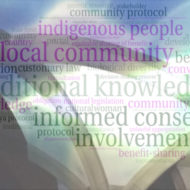Text from historical resources, in most cases represented in XML, can be enriched with semantic information, which associates text elements with meanings in the form of annotations. These annotations consist of one ore more XML attributes.
I use the results from a study from the University of Aberdeen as example, in which applied text analytical tools to a 100-page transcription of Aberdeen council registers in Latin and Middle-Scots. It provides a good example of the development of text annotation as source data for Semantic Web and Linked Open Data applications based on machine readable and richly annotated text.
While manually annotating text, the scholarly expert annotated the Middle-Scots word ‘kirk’ as follows:

In this annotation structure we see that the textual string ‘kirk’ is translated as ‘church’ and classified as a ‘ChurchBuilding’.This class ‘ChurchBuilding’ was then associated with the URI of a class from an ontology, which formalizes the semantics of the documents into a conceptual structure:
‘http://gate.ac.uk/ns/ontologies/DotRural.owl#ChurchBuilding’
In XML, this is done by means of an annotation link. It is now conceptualized by means of a conceptual class from an ontology that is shared as linked data on the web.
This allows the exploration of the ontological context of ‘ChurchBuilding’ as represented in the mentioned ontology, e.g.:

Data from the XML can be visualized in Gate or queried in e.g. Xquery, wheres the ontology content (in OWL), can be accessed using Sparql.
This example shows how XML annotation acts as a precursor for identifying conceptualizations, which can then be used in Semantic Web and linked data applications.
Detailed information on the content of the ontology refered to in this example can be obtained from A Text Analytic Approach to Rural and Urban Legal Histories.
